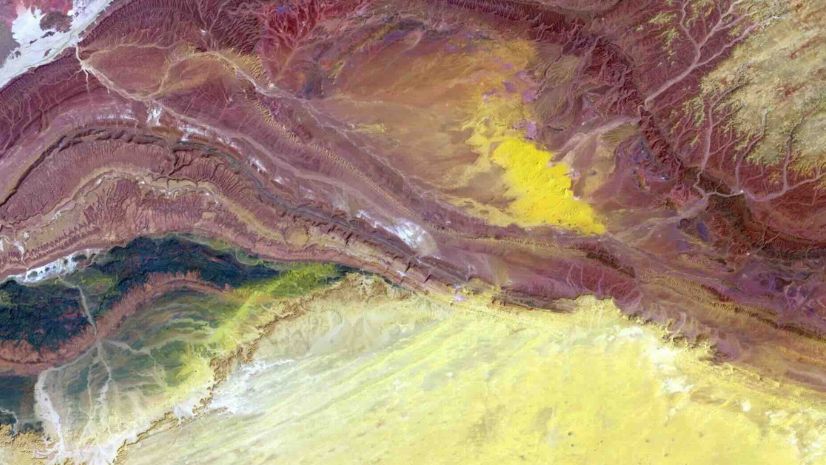Each year since 2018, the American Public Works Association (APWA) surveys their 30,000+ membership to identify the Top 5 Tech Trends for the Public Works community. For 2024, they are:
- Artificial Intelligence (AI) Condition Assessment Data Collection
- Availability of Centralized Community GIS mapping data
- Lead Service Line Identification
- Microgrids
- Sustainability Due to Severe Events—Improving Transportation Infrastructure
As in previous years, GIS was included, but its influence is manifested in the other four trends, as GIS is an integrative technology. For public works, location is never an afterthought, GIS is continuously recognized as a mission-critical, foundational, enterprise IT business system and the community’s reliance on the technology to support daily operations and provide significant business value has increased for decades.
Here are some examples of GIS integration with the 2024 Top 5 Tech Trends for Public Works:
Artificial Intelligence Condition Assessment Data Collection
GIS and AI, or GeoAI, can provide significant business value in many areas including data collection and assessment of asset condition. Douglas County, Nebraska, leveraged deep learning models within ArcGIS for extracting features from imagery to identify over 34,000 ADA curb ramps within the county. This model saved a considerable amount of time and money and allowed the county to shift human labor to other prioritized capital improvement projects that needed more assistance.
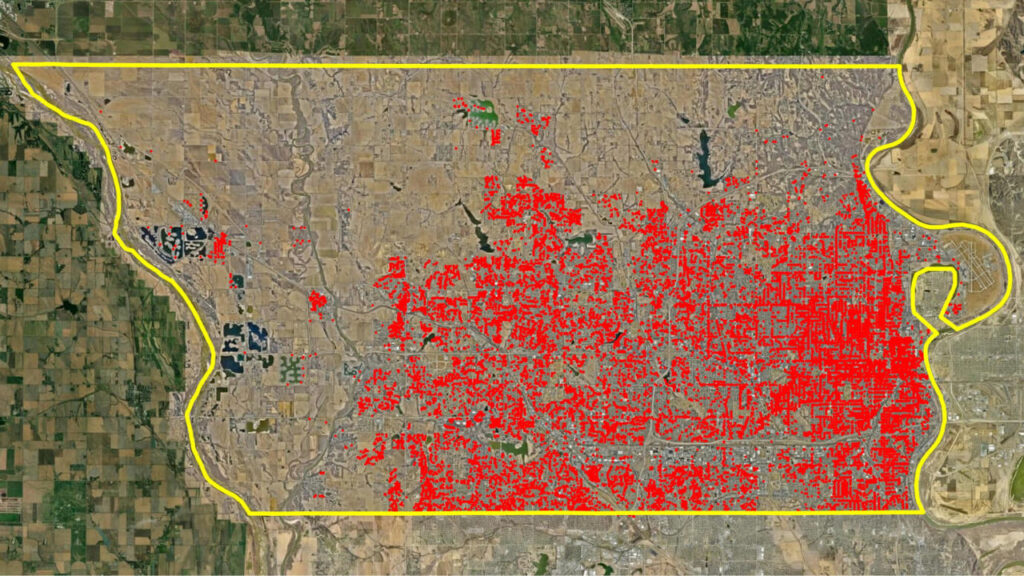
A year after an ice storm, the City of Salem, Oregon recovery teams identified tree canopy loss using before-and-after imagery, GIS, and AI machine learning.
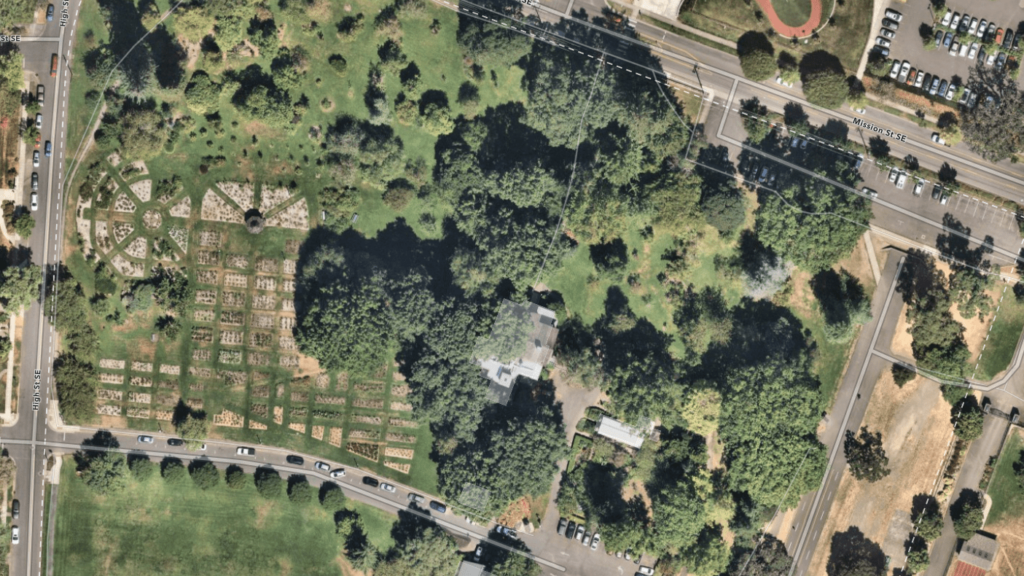
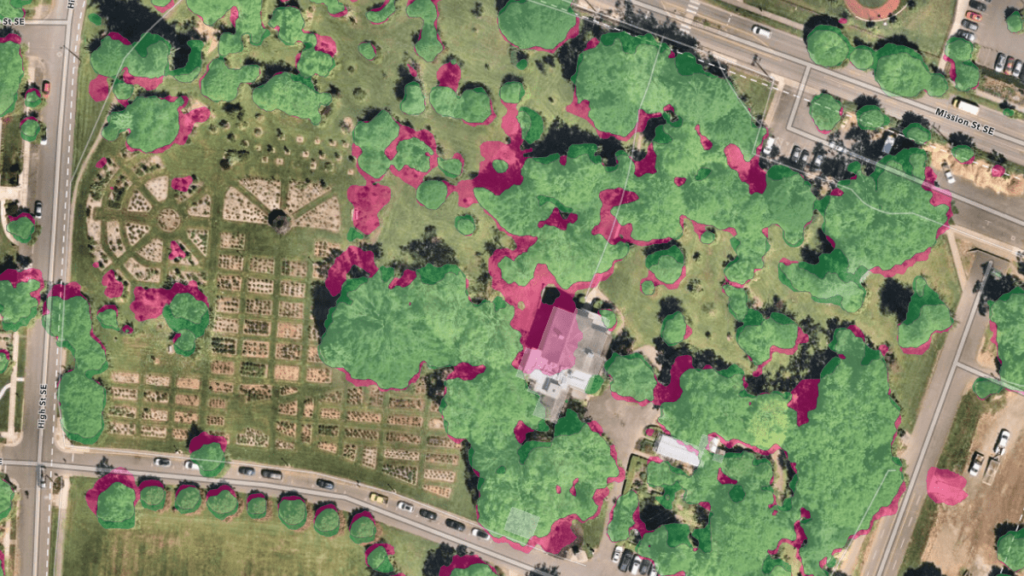
Esri Startup Partner, SeerAI, used GeoAI and pre- and post-storm imagery to create an unobstructed road network for routing emergency vehicles for Florida within 24 hours after Hurricane Ian hit. What used to take days is now able to be done in minutes, and AI can serve as an accelerant to help make decisions that may be extremely challenging or slow to make without the assistance of this technology.
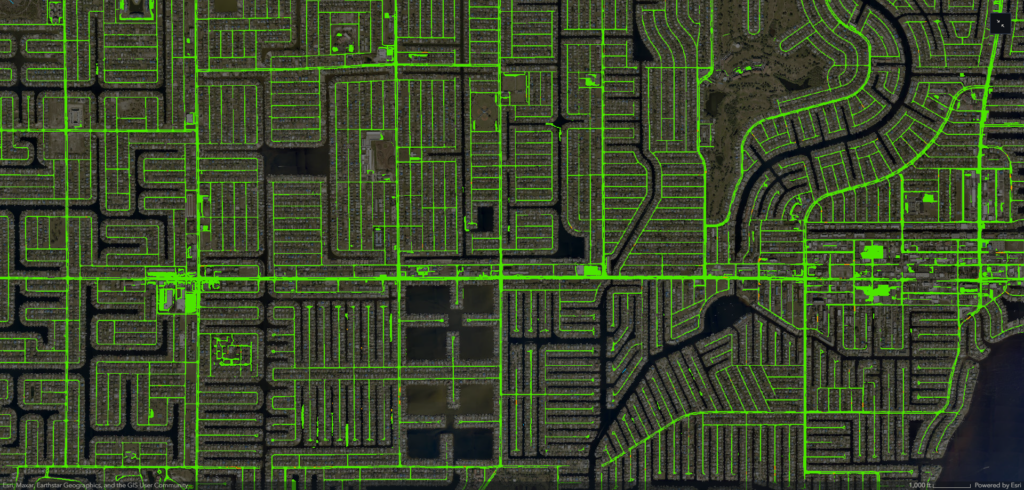
Availability of Centralized Community GIS mapping data
St. Johns County, FL. is an innovative leader when it comes to the application of GIS to support Public Works. They provide multiple ways that the public can access centralized community GIS mapping data:
- Central Access Hub – this is the home website for Public Works GIS
- Open Data Hub – this is the home for Public Works Open Data
- Asset Management Inventory – this site provides interactive public access to asset management information on:
- County Maintained Roads
- Transportation Assets
- Storm Drainage Assets
- Drainage Easements
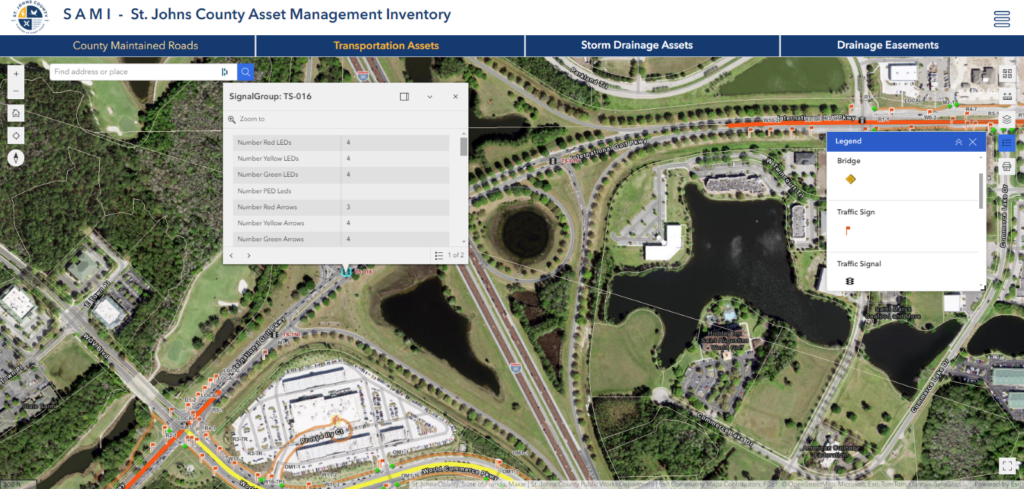
Lead Service Line Identification
The US Environmental Protection Agency (EPA) Lead and Copper Rule Revisions (LCRR) require water systems to prepare and maintain an inventory of service line materials by October 16, 2024. The 2023 EPA Drinking Water Infrastructure Needs Survey and Assessment estimates that there are more than 9 million lead service lines and 2.8 million stand-alone galvanized service lines in the US.
GIS can be used to integrate disparate data types. In addition, in response to the EPA’s Lead and Copper Rule Revisions, Esri developed the Lead Service Line Inventory solution that delivers a set of capabilities that help utilities streamline their inventory, validate material, monitor replacement, and share information with the public. The city of Benton Harbor, Michigan, used this solution as a base framework to configure and customize their water service line inventory project to meet their specific needs and goals.

Microgrids
For decades, electric utilities have used GIS to plan, design, and manage their operations, and microgrids are the latest example of how GIS can provide business value. GIS technology provides the means to model the grid in detail and provides real-time situational awareness by bringing in web services, such as weather, fire, crew location, and social media data. Utilities can monitor construction progress, route crews in an efficient manner, and help identify the best location for repeaters, sensors, PMUs, and new communication backbones. GIS is the mission critical, enterprise IT business system for supporting electric utilities with asset management, operations management, safety and compliance, customer care, and design and engineering.
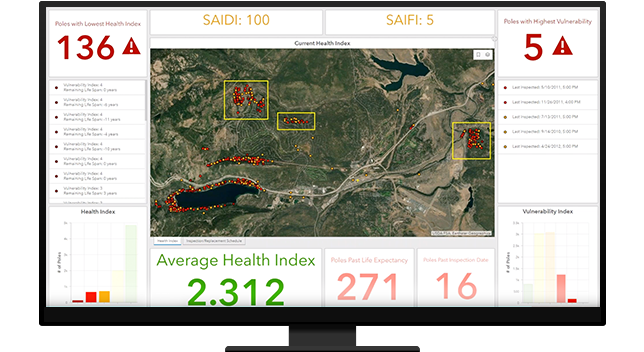
Sustainability Due to Severe Events—Improving Transportation Infrastructure
As climate impacts are escalating, the need for mitigation and adaptation to increase resilience and sustainability has grown with it. Our transportation infrastructure is a critical part of our communities, so we must improve it and make it more resilient and sustainable in response to climate events. GIS is the tool designed to provide the capabilities necessary to realize this goal. Here are some examples:
- Climate Mapping for Resilience and Adaptation (CMRA) Assessment Tool is powered by GIS and helps people assess their local exposure to climate-related hazards.
- Maryland DOT developed a GIS-powered Climate Change Vulnerability Viewer
- Southern California Association of Governments (SCAG) developed a GIS-powered Climate Risk & Vulnerability Assessment Tool
- Virginia Beach, Virginia provides a publicly accessible Severe Weather Impact Dashboard powered by real-time GIS
- Fairfax Co., Virginia released GIS powered tools to identify, model, and analyze new areas of flood risk
For decades, thousands of public works agencies have partnered with Esri as their first choice to incorporate spatial thinking into their daily operations with ArcGIS. What are your plans for 2024 for implementing GIS and the rest of the Top 5 Tech Trends in your public works operation? For more information on how you can use GIS to support your mission, please check out our website: https://go.esri.com/GIS4PW. If you have a GIS success story you would like to share with the community, please visit our self-service success story portal.
The role of GIS extends to six focus areas within the public works industry. To view how the next generation of public works are powered by ArcGIS, access our new brochure at go.esri.com/gis-top-tech.

